Many types of nut trees can grow to be quite large and require a significant amount of time to reach maturity. However, once they do reach maturity and reach their full size, they are ideal for providing shade.
If you have enough space, plant one of these 14 common nut trees that you’re sure to have eaten from or seen before!
1. Black Walnut

Most people have seen a black walnut and didn’t even realize it. They grow tall and produce green fruit larger than a golf ball but smaller than a baseball.
Enjoy its fruit and shade, but be sure you have room for this Mid-West native as it will grow to fill in any yard!
- Mature size: 70 to 80 feet tall and 50 to 70 feet wide
- Key identifying features: Green globe fruit, multiple divided leaves, large size
- Years to reach maturity: Bears fruit in 12 to 15 years reaching full maturity in 60 to 80 years
- Grow Zones: USDA Zones 4 through 9
2. English Walnut

A smaller version compared to the black walnut, the English walnut fruit looks almost identical to that of the black walnut.
The tree doesn’t grow too large, so it is better for yard plantings than black walnut. Since walnuts are a healthy addition to your diet, it may be a good idea to add one to your landscape.
- Mature size: 40 to 60 feet tall and wide
- Key identifying features: Multiple divided leaves, clusters of three fruit pods, smooth ligh-gray bark
- Years to reach maturity: Bears fruit in 4 to 8 years
- Grow Zones: USDA Zones 3 through 7
3. Chestnut
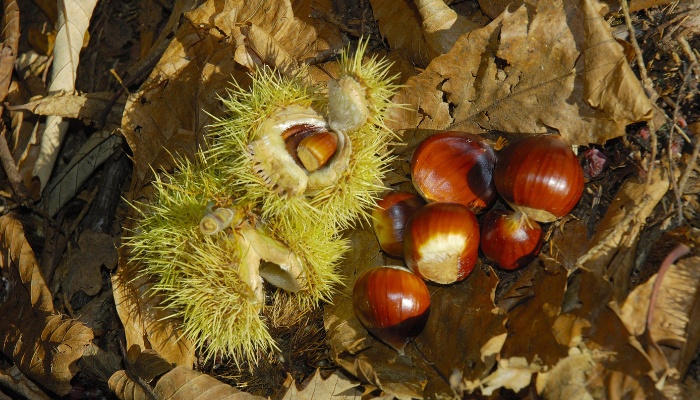
The American, European, and Chinese chestnut species all vary slightly. The American is the largest, the European variety is slightly smaller, and the Chinese is the smallest.
Full of antioxidants even after being cooked, chestnuts aren’t only for snacking during the winter holidays!
- Mature size: American 80 feet tall and 60 feet wide, European 65 feet tall and 50 feet wide, Chinese 40 feet tall and wide
- Key identifying features: Spiky seed pod, dark-green glossy leaves, long pointed leaf
- Years to reach maturity: 3 to 5 years, producing bountifully in 15 to 20 years
- Grow Zones: USDA Zones 4 through 9
4. Hazelnut

The hazelnut tree is compact and is the perfect ornamental and food-producing tree! It will produce delicious nuts in the fall and is extremely tolerant to hot and cold spells.
They are beneficial as windbreaks and can be planted in numerous locations because they do well in poor soil conditions.
- Mature size: 15 to 18 feet tall and 10 to 12 feet wide
- Key identifying features: Unique seed pod, serrated ovate leaf, small size
- Years to reach maturity: Bears fruit in 8 to 10 years
- Grow Zones: USDA Zones 4 through 9
5. Shagbark Hickory
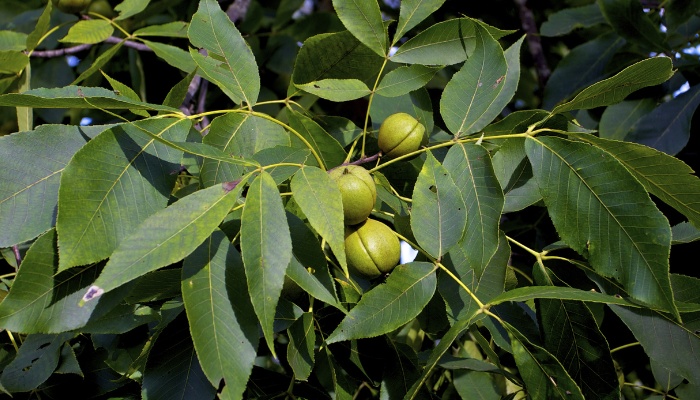
Easily noticeable with its huge pieces of bark that peel away, the shagbark hickory tree takes some time before it begins to bear fruit.
It has a vibrant yellow leaf drop that makes it stand out among the other fall colors.
- Mature size: 60 and 80 feet tall and 50 to 60 feet wide
- Key identifying features: Large exfoliating bark, yellow autumn foliage
- Years to reach maturity: Bears fruit after 40 years
- Grow Zones: USDA Zones 4 through 8
6. Shellbark Hickory
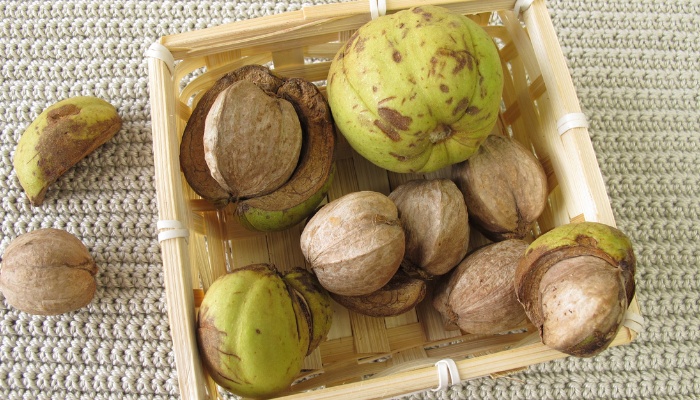
The shellbark hickory grows the largest of all hickory nuts! Although it looks very similar to the shagbark hickory, its fruit will show the difference with divided fruit capsules.
If you don’t want it for its nuts, its wood is renowned by craftsmen for its high quality and many uses.
- Mature size: 60 to 80 feet tall and 40 feet wide
- Key identifying features: Large exfoliating bark, compound alternate leaves, green divided fruit
- Years to reach maturity: Bears fruit in 10 to 12 years
- Grow Zones: USDA Zones 5 through 8
7. Oak
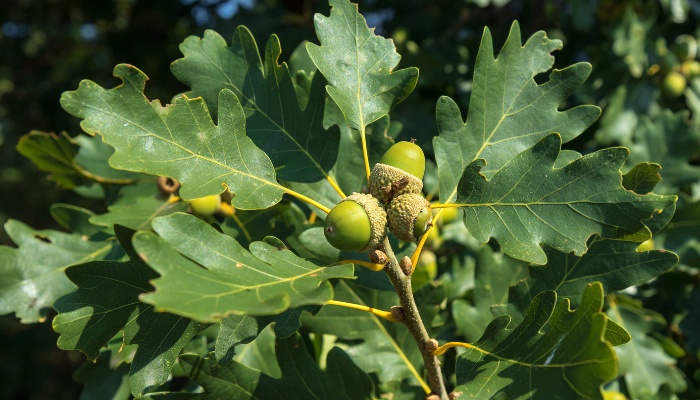
With different versions of oak trees in different parts of the country, some are deciduous and others are evergreen.
You’ll find varieties with large lobed leaves that are deciduous and grow in the lower USDA Zones and small serrated-leaf versions growing in the warmer evergreen climates.
- Mature size: 40 to 80 feet tall and 60 to 100 feet wide
- Key identifying features: Acorns, large size, lobed or serrated leaves
- Years to reach maturity: Bears fruit in 15 to 20 years
- Grow Zones: USDA Zones 3 through 10
8. Butternut

Also known as white walnut trees, butternut trees grow edible fruit that is ready to be harvested in October.
Their oblong fruit has been harvested by natives for centuries for its rich buttery taste, and the tree grows into a great shade tree!
- Mature size: 40 to 60 feet tall and 35 to 50 feet wide
- Key identifying features: Divided leaves, green fruit husk, deeply furrowed grey bark
- Years to reach maturity: 7 to 10 years
- Grow Zones: USDA Zones 3 through 7
9. Pecan

A member of the hickory family, this deciduous tree will grow large and produce bountiful pecans once established.
If you hope to grow this tree for the pecans, be sure you plant two of them of different varieties to pollinate one another.
- Mature size: 70 to 100 feet tall and 45 to 70 feet wide
- Key identifying features: Pointed divided leaves, oblong green fruit, orange autumn leaves
- Years to reach maturity: Bears fruit after 9 to 10 years
- Grow Zones: USDA Zones 6 through 9
10. Brazil Nut
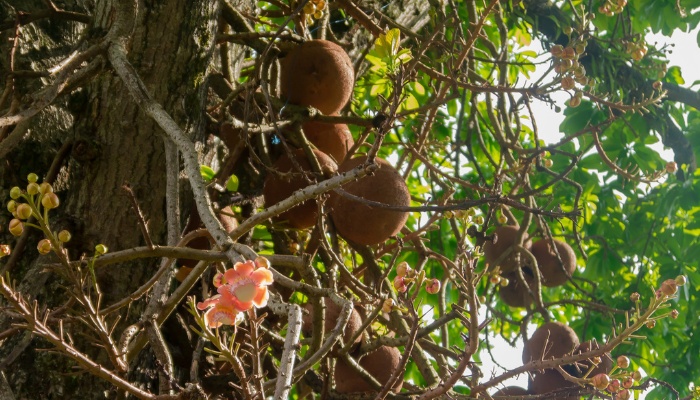
Native to South America, the Brazil nut is one of the rainforest’s longest-living species of trees, living nearly 500 years!
They are loved for their large brown nuts that grow on a large tree. Once the flower is pollinated, the large seed pods will take 15 months to mature before they drop to the ground and are ready for harvest.
- Mature size: 160 feet tall and 100 feet wide
- Key identifying features: Long trunk with a high canopy, large circular nut pods
- Years to reach maturity: Bears fruit after 20 years
- Grow Zones: USDA Zones 11 through 13
11. Pignut

A variety of hickory, the pignut grows green fruit that resembles a pig snout when opened!
With smooth bark, it stands out compared to its other hickory counterparts. It has yellow foliage in the autumn that reveals this smooth bark on the trunk.
- Mature size: 55 to 65 feet tall and 30 to 40 feet wide
- Key identifying features: Divided leaves, green nut coat, smooth bark
- Years to reach maturity: Bears fruit after 25 to 30 years
- Grow Zones: USDA Zones 4 through 9
12. Mockernut
A long-living member of the hickory family, the mockernut is the most abundantly found member of the Juglandaceae family growing in nature.
While this tree does produce nuts like the rest of the hickories, it is called a mockernut because its nuts are usually small and disappointing. This is not the best choice for hickories if you hope to harvest nuts!
- Mature size: 50 to 80 feet tall and 20 to 30 feet wide
- Key identifying features: Divided leaves, small green fruit
- Years to reach maturity: Bears fruit after 25 years
- Grow Zones: USDA Zones 6 through 8
13. Beech
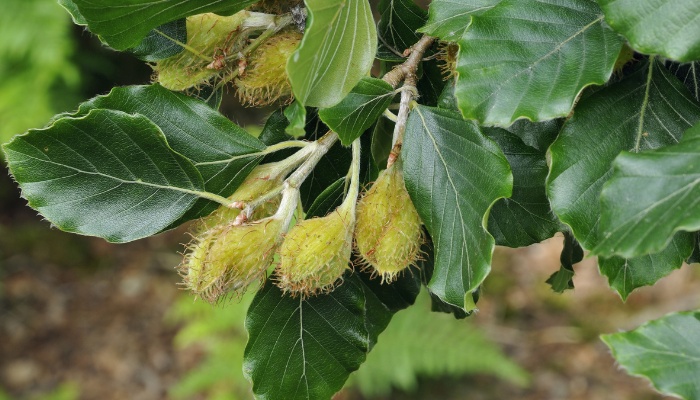
Believed by the ancient Greeks to be the first food eaten by humans, we now know beechnuts should not be eaten in high quantities due to the trace amount of poison they produce.
The beech tree’s leaves are delicate and have a wavy texture, creating a unique appearance when they blow in the wind.
- Mature size: 50 to 70 feet tall and 30 to 40 feet wide
- Key identifying features: Unique leaves, autumn foliage, light silver bark
- Years to reach maturity: Bears fruit after 30 to 40 years
- Grow Zones: USDA Zones 3 through 9
14. Birch
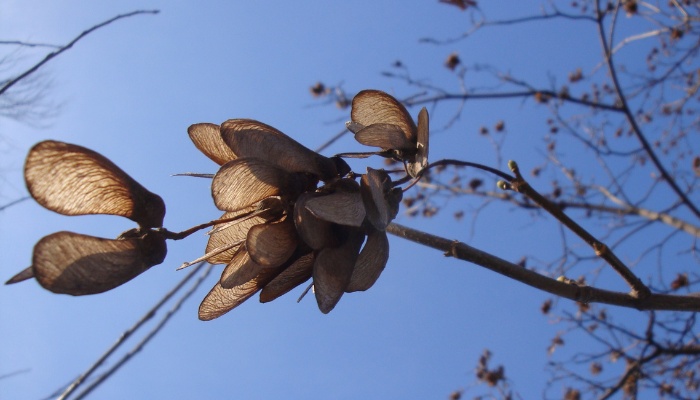
The small nuts (nutlets) from birch trees are not true nuts, but they are edible.
The birch tree is mostly known for its white exfoliating bark that steals the show in all the seasons, especially when paired with the bright oranges and yellows of the fall leaf color change.
- Mature size: 60 to 80 feet tall and 30 to 40 feet wide
- Key identifying features: Exfoliating bark, nutlets, autumn foliage
- Years to reach maturity: Bears fruit after 10 years
- Grow Zones: USDA Zones 3 through 8
Closing Thoughts
While you may think that nut trees are only good for growing a treat, they are so much more!
With their great size, quality lumber, and beautiful autumn foliage, you should plant one of these nut trees in your yard!
Next time you’re meandering through the forest, you may be able to recognize a few new trees based on this list!
